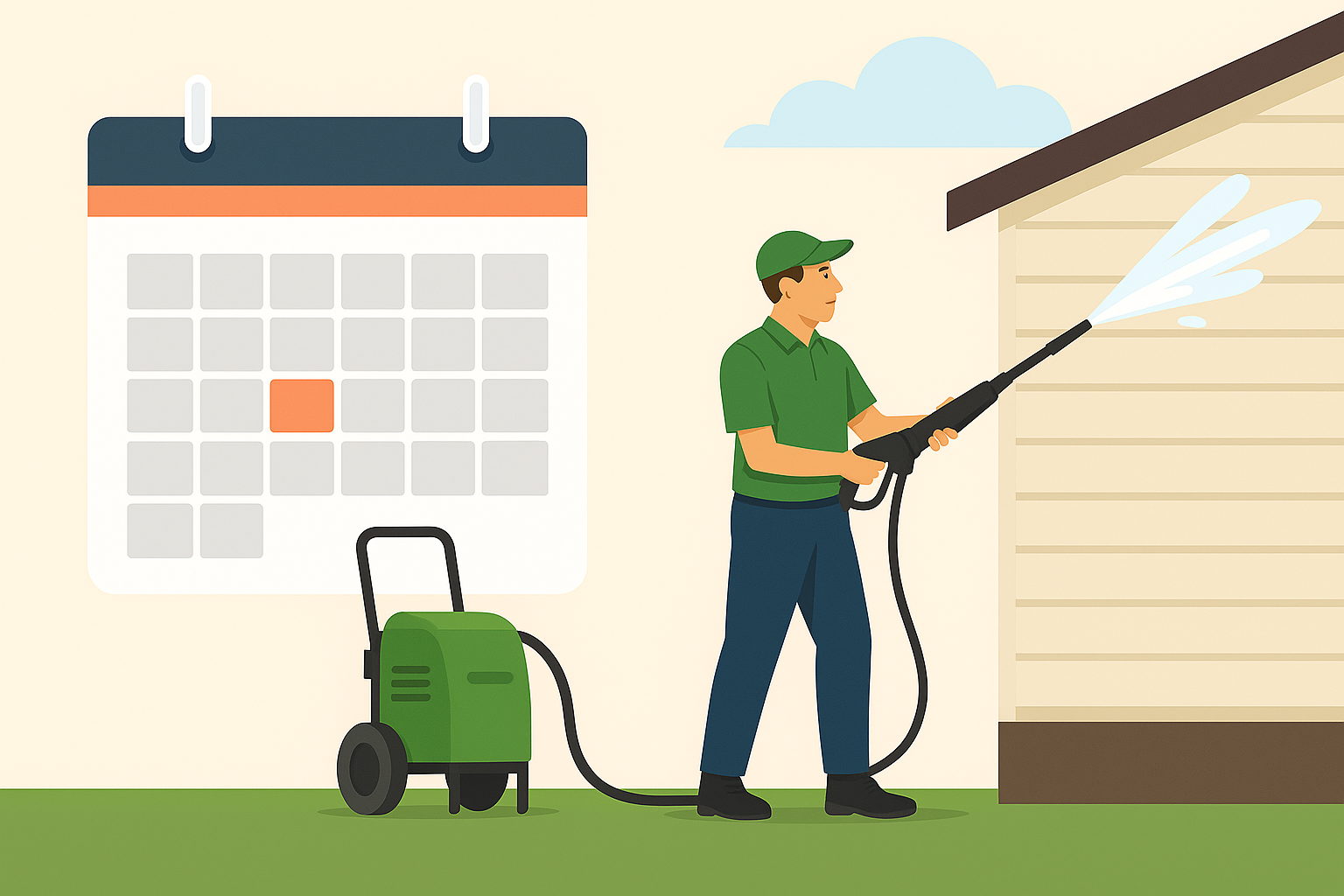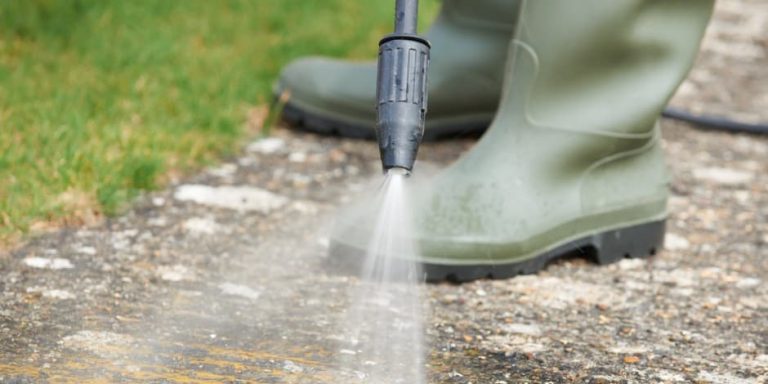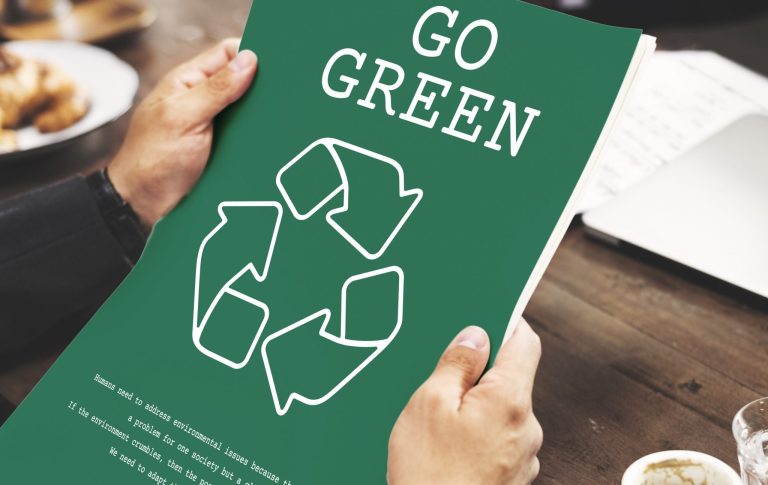
Keeping your home’s exterior clean is important for both curb appeal and maintenance—but if you’re pressure washing too often or at the wrong times, you could be doing more harm than good, especially to the environment.
Many homeowners fall into a pattern of routine power washing without understanding the ecological consequences of their timing, frequency, and detergent choices. This article will guide you through crafting a responsible, environmentally-friendly pressure washing schedule that balances cleanliness with sustainability. 🏠💧
🚿 Why Homeowners Use Pressure Washers
Residential power washing is commonly used for:
- Driveways and sidewalks
- Decks and patios
- Siding, stucco, or brick walls
- Roofs and gutters
- Outdoor furniture or fencing
The problem arises when people treat it like a seasonal ritual, not a needs-based task.
❌ The Risks of Washing Too Often
Routine or unnecessary washing can lead to:
💦 Water Waste
Pressure washers use 2–8 gallons of water per minute, depending on model and setting. Washing your driveway or siding just because “it’s spring” can waste hundreds of gallons of water—especially in dry regions.
🧪 Chemical Runoff
Even if you’re using eco-labeled detergents, frequent use results in:
- Soil contamination
- Runoff into storm drains
- Water pollution in nearby rivers or lakes
- Damage to beneficial insects and plants
🧱 Surface Damage
Siding, wood decks, and concrete all degrade faster when exposed to frequent high-pressure streams, requiring more maintenance and generating more environmental waste.
✅ Signs It’s Time to Wash (The Smart Way)
Instead of following a calendar-based schedule, use these environmental cues to determine when washing is needed:
- Moss, algae, or mildew buildup
- Slippery surfaces on decks or driveways
- Heavy pollen or bird droppings not removed by rain
- Paint prep or sealing project requires clean surface
- Stains from oil, rust, or tree sap
If your surfaces are just dusty or lightly soiled, a broom or garden hose may suffice—and save hundreds of gallons of water. 💧
🗓️ A Sample Eco-Friendly Residential Washing Schedule
Here’s a general framework you can adapt based on location, weather, and materials:
| Surface | Suggested Eco Schedule |
|---|---|
| Driveway | Once per year (spring or fall) |
| Deck or patio | Once every 12–18 months |
| House siding | Every 2–3 years unless visibly dirty |
| Roof | Every 3–5 years (only when needed) |
| Outdoor furniture | Spot clean as needed |
⚠️ Important: In shady, humid areas, algae may form faster. In dry climates, dust may build up more. Adjust as needed, but don’t assume frequency equals cleanliness.
🌿 Eco-Friendly Tips for Each Surface
🧱 Concrete and Driveways
- Use cold water only unless tackling oil
- Sweep thoroughly first to reduce wash time
- Treat stains with vinegar or baking soda before pressure washing
- Always direct runoff away from storm drains
🌲 Wood Decks and Fences
- Use low-pressure settings or a “soft wash” technique
- Avoid washing after staining/sealing—wait at least 6 months
- Spot clean with oxygen bleach, not chlorine
- Cover nearby soil or plants during cleaning
🏠 House Siding
- Use biodegradable detergent or warm water only
- Rinse gently—avoid high PSI near windows or vents
- Don’t wash in direct sunlight (can cause streaking and evaporation)
🧴 Choose the Right Cleaning Products
Even if you wash less frequently, your detergent matters. Look for:
- Biodegradable and phosphate-free formulas
- Non-toxic to aquatic life (check for EPA Safer Choice label)
- No added dyes or fragrances
- Minimal suds to prevent runoff foaming in street gutters
🧼 Pro tip: Spot test your detergent near plants—if leaves yellow within 24 hours, the formula may be too harsh.
Browse Amazon Here For Biodegradable Pressure Washing Detergents
🌧️ Timing Matters
Always plan your power washing around the weather:
- Don’t wash before or during rainstorms—runoff will accelerate into drains
- Avoid extremely dry or windy days, which increase dust and evaporation
- Early morning or late afternoon avoids peak water loss and minimizes evaporation
Using less water over a longer period is far better than blasting away during a hot afternoon in July.
♻️ Rethink What “Clean” Means
The cultural push for spotless concrete and mildew-free siding is largely aesthetic. But nature doesn’t stay spotless—and that’s okay.
- A bit of algae under a deck doesn’t harm your home
- Natural discoloration on pavers adds character
- Some dirt washes away with the next rainstorm
Choosing not to clean something today can be the most eco-friendly action of all. 🌎
🧠 Final Thoughts
Creating an eco-friendly power washing schedule isn’t about skipping cleanings altogether—it’s about choosing the right time, tools, and approach to minimize your environmental impact.
By washing only when necessary, using biodegradable cleaners, and protecting your yard from runoff, you can maintain your home’s beauty without harming the planet.
Clean smarter, not more often. ✅💚
Browse Amazon Here For Top Rated Power Washers And Accessories






